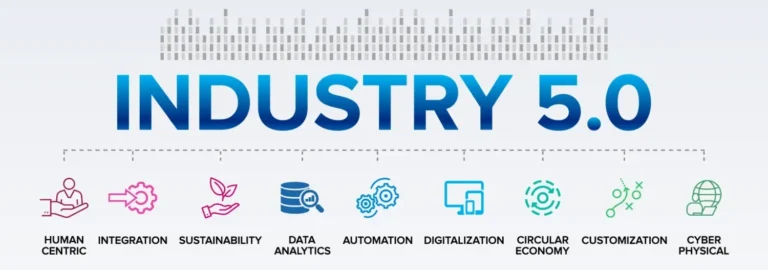Streamlining Operations: Robotic Process Automation (RPA) in Banking
Robotic Process Automation or RPA in banking has emerged as a game-changer in the industry, revolutionizing the way financial institutions operate. This technology has gained significant traction in the banking sector due to its ability to enhance operational efficiency, reduce costs, and improve customer experiences.
The Importance of Efficiency in Banking
Efficiency is crucial for the success of banking operations. Customers expect quick and seamless transactions, and banks need to meet these expectations to stay competitive. With efficient processes, banks can provide faster services, reduce errors, and improve overall customer satisfaction.
Moreover, efficiency plays a significant role in cost reduction. By streamlining operations and eliminating manual tasks, banks can save time and resources, leading to increased profitability. Efficient banking operations also enable banks to allocate their resources effectively and focus on core business activities.
Thus, efficiency is a key driver of success in the banking industry. It enables banks to deliver better services to customers, reduce costs, and stay ahead of the competition.
How does RPA streamline banking operations?
With RPA in banking, it is possible to automate a wide range of processes, including data entry, transaction processing, account reconciliation, customer onboarding, compliance reporting, and more.
By automating tasks, banks can significantly reduce errors, improve accuracy, and accelerate processing times. This not only improves overall operational efficiency but also enhances customer satisfaction by providing faster, more reliable services.
Moreover, RPA in banking enables greater scalability and flexibility in operations. As the volume of transactions and customer demands increase, RPA can easily scale up to handle the workload without the need for additional human resources. This allows banks to streamline their operations, reduce operational costs, and improve their overall competitiveness in the market.
The rise of RPA in banking is also driven by the increasing need for regulatory compliance. Banks are required to adhere to numerous regulations and reporting requirements, which can be time-consuming and prone to errors when done manually. By implementing RPA, banks can automate compliance processes, ensuring accuracy and consistency in regulatory reporting.
Benefits of Implementing RPA in Banking Operations
Implementing RPA in banking operations offers numerous benefits for financial institutions.
Operational Efficiency in Banking
One of the key advantages is increased operational efficiency. By automating repetitive and rule-based tasks, RPA eliminates the need for manual intervention, reducing errors and processing times. This allows banks to streamline their operations, improve productivity, and allocate their human resources to more value-added activities.
Cost Reduction in Banking
Another benefit of RPA is cost reduction. By automating tasks that were previously performed by human employees, banks can significantly reduce labor costs. Additionally, RPA enables banks to achieve greater scalability and flexibility without the need for additional resources, resulting in cost savings.
Data Accuracy and Compliance
RPA also enhances data accuracy and compliance. By automating data entry and reconciliation processes, RPA ensures accuracy and consistency in financial data, reducing the risk of errors. Moreover, RPA can automate compliance reporting, ensuring banks adhere to regulatory requirements and reducing the risk of penalties.
Enhanced Customer Experience in Banking
Furthermore, RPA in banking improves customer experiences by providing faster and more reliable services. With automated processes, banks can accelerate transaction processing times, reduce wait times, and enhance customer satisfaction. This can lead to increased customer loyalty and retention.
The aforementioned advantages make RPA a valuable tool for financial institutions seeking to streamline their operations and stay competitive in the market.
Challenges and Considerations in Adopting RPA in Banking
While RPA in banking offers numerous benefits, there are also challenges and considerations that financial institutions need to take into account when adopting this technology.
One of the key challenges is the integration of RPA with existing systems and processes. Banks often have complex and legacy IT systems, which may not be compatible with RPA solutions. Therefore, careful planning and collaboration between IT teams and RPA vendors are essential to ensure a smooth integration process.
Another challenge is the potential impact on the workforce. With the implementation of RPA, certain job roles may become redundant or require reskilling. Banks need to proactively manage the transition and communicate with employees to address any concerns or uncertainties.
Data security and privacy are also important considerations. RPA involves the handling of sensitive financial data, and banks need to ensure that adequate security measures are in place to protect against data breaches and unauthorized access.
Furthermore, regulatory compliance is a critical aspect when adopting RPA in banking. Banks need to ensure that RPA solutions comply with relevant regulations and industry standards. This may require additional efforts in terms of testing, validation, and documentation.
As we can see, adopting RPA in banking comes with challenges such as system integration, workforce impact, data security, and regulatory compliance. Financial institutions need to carefully consider these factors and develop a comprehensive implementation strategy to maximize the benefits of RPA while mitigating potential risks.
Future Trends and Opportunities for RPA in Banking
The future of RPA in banking is promising, with several trends and opportunities on the horizon.
One trend is the integration of artificial intelligence (AI) with RPA. By combining AI capabilities such as natural language processing and machine learning with RPA, banks can automate more complex and cognitive tasks, further enhancing operational efficiency.
Another trend is the expansion of RPA beyond back-office operations. While RPA initially focused on automating repetitive tasks, its potential is now being recognized in customer-facing processes such as chatbots and virtual assistants. This allows banks to provide personalized and automated customer interactions, improving customer experiences.
Moreover, the rise of open banking and the increasing use of APIs present opportunities for RPA in data integration and process automation. RPA can facilitate the seamless exchange of data between different systems and enable banks to automate end-to-end processes across multiple platforms and applications.
Additionally, advancements in cloud computing and software-as-a-service (SaaS) models provide scalability and cost-effective options for RPA implementation. Banks can leverage cloud-based RPA solutions to easily scale up or down based on their operational needs, reducing upfront investments and infrastructure requirements.
The rise of RPA in banking has transformed the industry by automating repetitive tasks, improving operational efficiency, and enhancing customer experiences. Financial institutions need to stay updated with these trends and explore the opportunities they bring to maximize the benefits of RPA in their operations.







